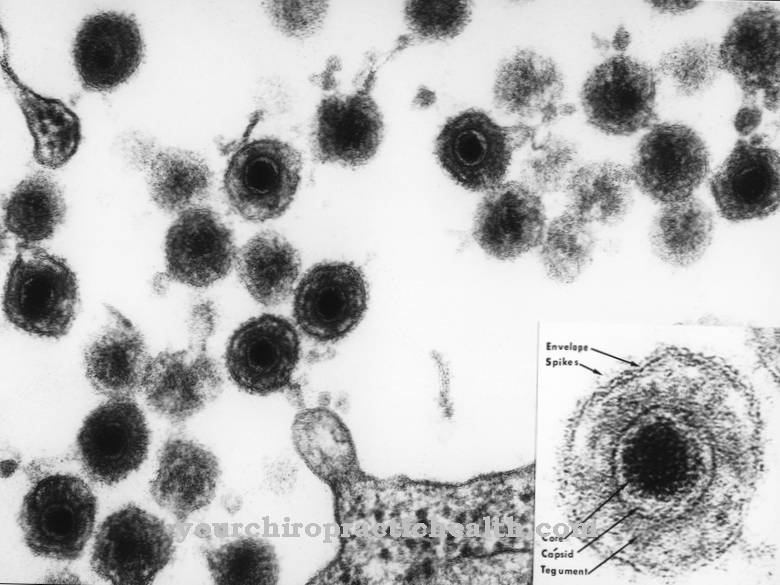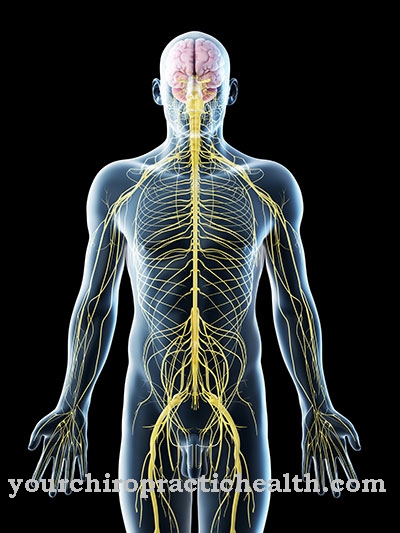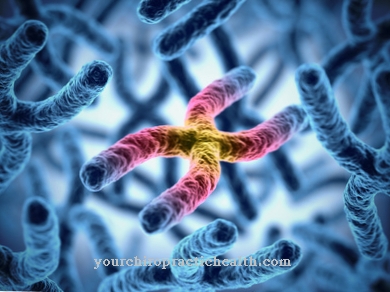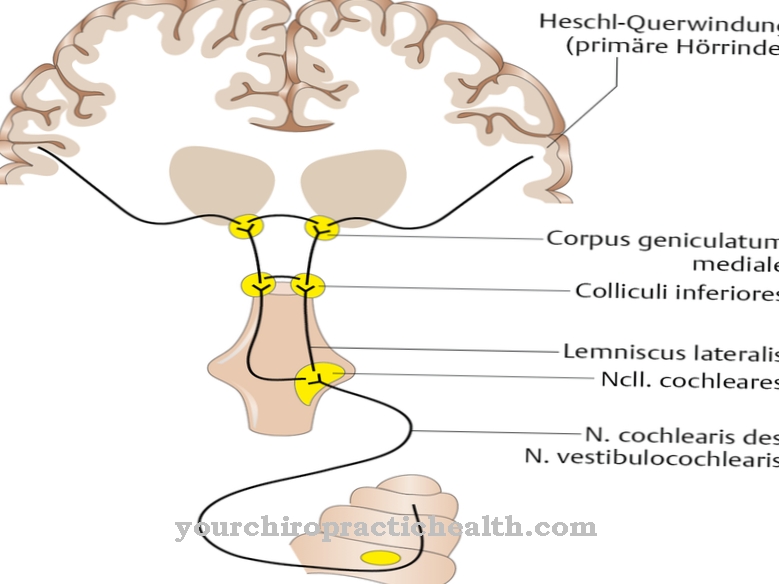Of the PH value characterizes aqueous solutions with regard to their acid or base content. It depends on the hydrogen ion concentration in the solution. In the medical field, the pH value of the blood mainly plays a role in the diagnosis of certain diseases.
What is the pH?
By definition, the pH value represents the negative decatical logarithm of the hydrogen ion concentration. It is a dimensionless value that characterizes the aqueous solution as an acid or a base.
The pH value varies within the numerical range from 0 to 14. At a value of 7 the solution is neutral. Values below 7 define an acid. The lower the number, the more acidic the solution. Values above 7 indicate a basic solution. The determination of the pH value only makes sense for aqueous solutions, because only here hydrogen ions (protons) or hydronium ions (proton bound to a water molecule) occur.
Since all chemical reactions in living systems take place in aqueous solution, the pH value plays an important role in biology. The individual organs and areas of the body each have an individual pH value.
construction
The organs and humors in the human body have different pH values. The pH value in the blood is usually within the narrow range between 7.35 and 7.45. So this is a slightly basic area. A buffer system ensures that the values can be kept very constant. Deviations up or down give indications of pathological processes in the body.
The urine is generally slightly acidic, but depending on your diet, it can also be basic. Its pH is between 4.5 and 7.9. The stomach produces hydrochloric acid to digest the porridge. That is why it is the most acidic organ with a pH value of 1-4. The basic enzymes of the pancreas, which are used to enzymatically break down the nutrients, neutralize the chyme again.
The skin contains a so-called protective acid layer with a pH value of 5.5. Sweat is also slightly acidic with a value of 4.5 in order to have an antibacterial effect. In saliva, the pH value varies from a slightly acidic value of 5.5 to a slightly basic value of 7.8, depending on the diet.
Function & tasks
All metabolic processes in the human body are closely linked to the pH value. Among other things, it plays a major role in the sugar metabolism (glycolysis), for vascular resistance, in the conduction of excitation, in muscle activity or for the oxygen binding to hemoglobin. The oxygen binding to hemoglobin is better at higher pH values than at lower values.
The pH value in the blood is determined by the carbon dioxide concentration. So if there is a lot of carbon dioxide (dissolved as carbonic acid) in the blood, the oxygen binding decreases due to the lower pH value. By exhaling the carbon dioxide, the basicity of the blood increases again. This again leads to better oxygen uptake. This mechanism already represents a simple buffer system. So if the cardiovascular and respiratory activities function normally, the pH value of the blood moves within the specified narrow limits.
The uptake of oxygen and the release of carbon dioxide are subject to a control mechanism. However, if the lungs are no longer able to breathe out the carbon dioxide sufficiently, the blood becomes more acidic and oxygen uptake is reduced. This is why pH value measurements are used to diagnose certain diseases. The organism always strives to keep the pH value stable. In addition to the respiratory buffer (through breathing), the body also has chemical buffers for blood and urine.
If the body fluids become too acidic, proteins are formed that trap excess hydrogen ions. The kidneys are also involved in maintaining the pH value. If the body is acidic, the kidneys excrete more hydrogen ions in the urine. If the body is too basic, more hydrogen carbonate or bicarbonate is excreted in the urine. If the pH value is to rise, the urine is acidic. When the pH value is supposed to drop, the urine appears correspondingly basic.
Diseases
Many diseases are associated with a deviation in the pH value. That is why pH value measurements are an important part of diagnostics. As already mentioned, the pH value of the blood moves within the narrow limits between 7.35 and 7.45. Even a slight upward or downward deviation can lead to life-threatening metabolic disorders.
Below a value of 7.35 it is referred to as acidosis and above a value of 7.45 as alkalosis. Acidosis represents over-acidification of the body. There are two causes of acute acidosis. In respiratory acidosis, lung diseases, broken ribs or other reasons lead to respiratory paralysis, which make the blood acidic. In the rarer metabolic acidosis, overacidification is caused by the metabolism. Acute acidosis results in low blood pressure, cardiac arrhythmias and coma.
There is also a respiratory and a metabolic form in acute alkalosis. Respiratory alkalosis results from increased exhalation of carbon dioxide during hyperventilation. On the other hand, metabolic alkalosis can be caused by severe vomiting, diuretic therapy, the ingestion of strongly alkaline substances or disorders of kidney function. The alkalosis manifests itself in severe cardiac arrhythmias. A pH above 7.7 is fatal. Treatment for acidosis or alkalosis depends on the cause. Chronic illnesses can also lead to a long-term deviation in the pH value.












.jpg)
.jpg)







.jpg)


.jpg)



